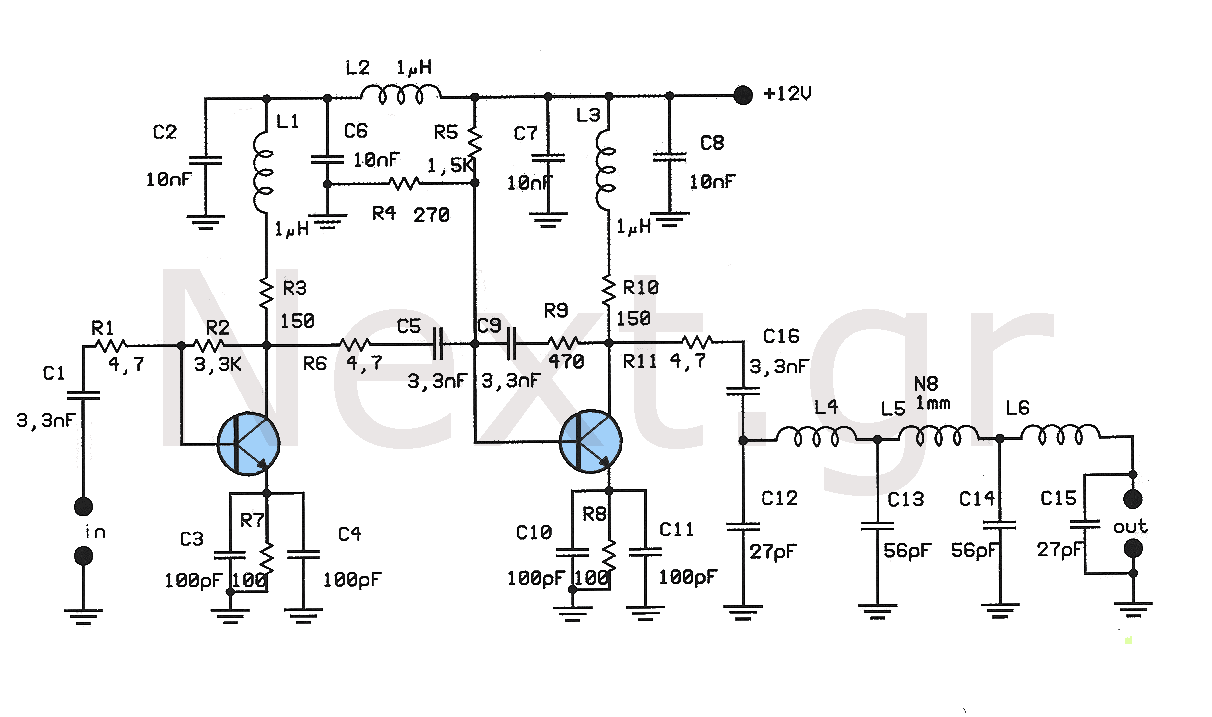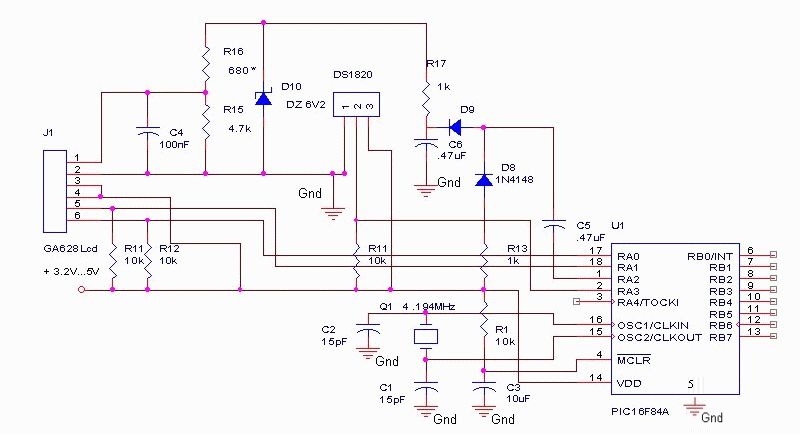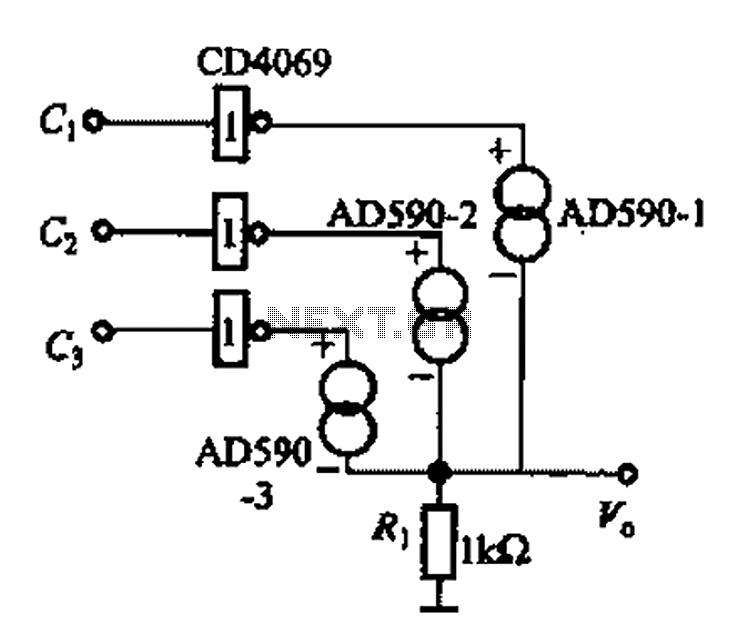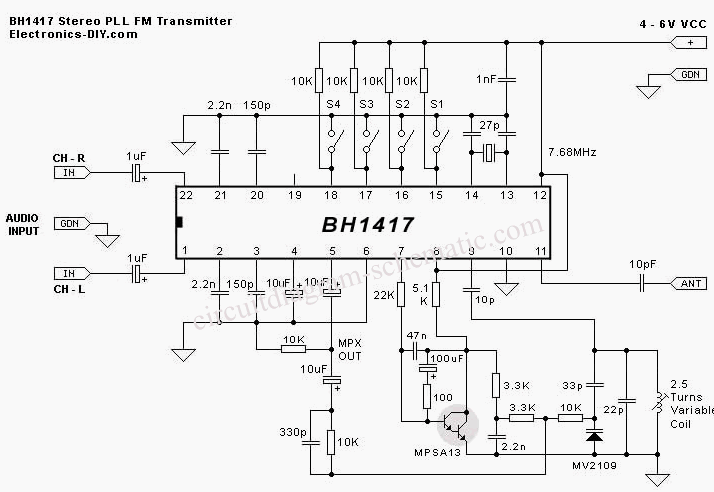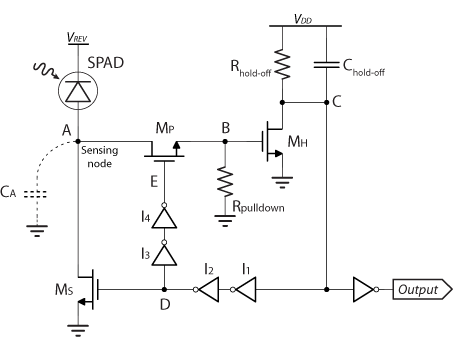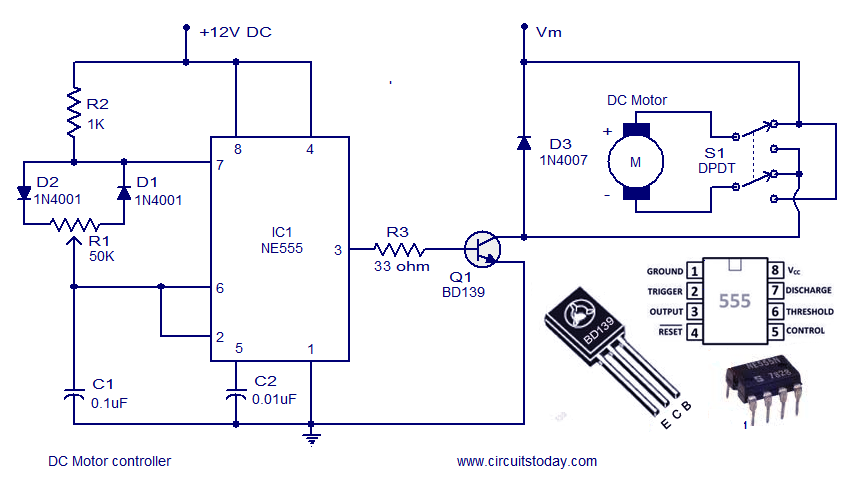
Common collector amplifier circuit DC and AC path b
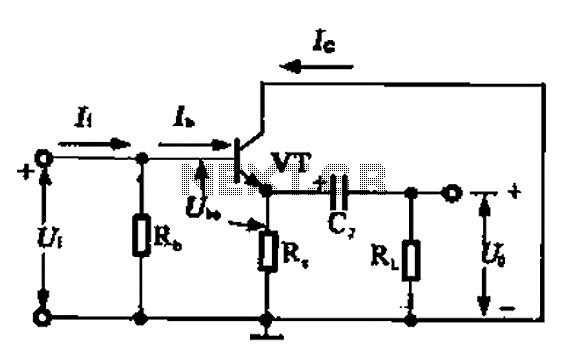
A common collector amplifier circuit can be analyzed through its DC and AC paths. The DC path provides a bias circuit for the power transistor, determining whether it is in an active or off state, primarily influenced by the biasing. This circuit also supplies energy to the transistor. The AC signal path functions by treating the AC signal capacitor as a short circuit, with the internal resistance of the power supply also being influenced by this short-circuiting of the AC signal.
The common collector amplifier, also known as an emitter follower, is a configuration that provides voltage gain while maintaining a low output impedance. It is particularly useful for impedance matching between different stages of a circuit. The circuit comprises a bipolar junction transistor (BJT) with its collector connected to the power supply and the emitter connected to the load. The input signal is applied to the base of the transistor.
In the DC analysis, the biasing network is crucial for the proper operation of the amplifier. Typically, resistors are used to set the base voltage, ensuring that the transistor operates in the active region. The DC path allows for the establishment of a stable operating point, which is essential for linear amplification. The bias current flowing through the transistor is determined by the values of the resistors in the biasing network and the power supply voltage.
For AC analysis, the circuit's behavior is examined under small-signal conditions. The coupling capacitor, connected at the input, blocks any DC component of the signal while allowing AC signals to pass. This capacitor effectively shorts the AC signal to ground at higher frequencies, ensuring that the transistor responds only to the variations in the input signal. The output voltage follows the input voltage, minus the base-emitter voltage drop, which is typically around 0.7V for silicon transistors.
In summary, the common collector amplifier is an essential building block in analog electronics, providing efficient signal buffering and impedance transformation. Its design considerations, including biasing and coupling, are critical for achieving the desired performance in various applications. Common collector amplifier circuit DC and AC path b (3) common-collector amplifier circuit DC and AC path when common collector amplifier circuit for analysis, can be divided i nto DC and AC two paths, as shown in FIG. The DC path to provide a DC bias circuit of the circuit from the power transistor, the transistor is in an enlarged state or the off state, it is mainly determined by the bias. This circuit also provides energy for the transistor circuit. AC AC signal path is functioning circuit, a capacitor AC signal can be regarded as a short circuit, the internal resistance of the power supply also depends on the AC signal is short-circuited.
The common collector amplifier, also known as an emitter follower, is a configuration that provides voltage gain while maintaining a low output impedance. It is particularly useful for impedance matching between different stages of a circuit. The circuit comprises a bipolar junction transistor (BJT) with its collector connected to the power supply and the emitter connected to the load. The input signal is applied to the base of the transistor.
In the DC analysis, the biasing network is crucial for the proper operation of the amplifier. Typically, resistors are used to set the base voltage, ensuring that the transistor operates in the active region. The DC path allows for the establishment of a stable operating point, which is essential for linear amplification. The bias current flowing through the transistor is determined by the values of the resistors in the biasing network and the power supply voltage.
For AC analysis, the circuit's behavior is examined under small-signal conditions. The coupling capacitor, connected at the input, blocks any DC component of the signal while allowing AC signals to pass. This capacitor effectively shorts the AC signal to ground at higher frequencies, ensuring that the transistor responds only to the variations in the input signal. The output voltage follows the input voltage, minus the base-emitter voltage drop, which is typically around 0.7V for silicon transistors.
In summary, the common collector amplifier is an essential building block in analog electronics, providing efficient signal buffering and impedance transformation. Its design considerations, including biasing and coupling, are critical for achieving the desired performance in various applications. Common collector amplifier circuit DC and AC path b (3) common-collector amplifier circuit DC and AC path when common collector amplifier circuit for analysis, can be divided i nto DC and AC two paths, as shown in FIG. The DC path to provide a DC bias circuit of the circuit from the power transistor, the transistor is in an enlarged state or the off state, it is mainly determined by the bias. This circuit also provides energy for the transistor circuit. AC AC signal path is functioning circuit, a capacitor AC signal can be regarded as a short circuit, the internal resistance of the power supply also depends on the AC signal is short-circuited.
